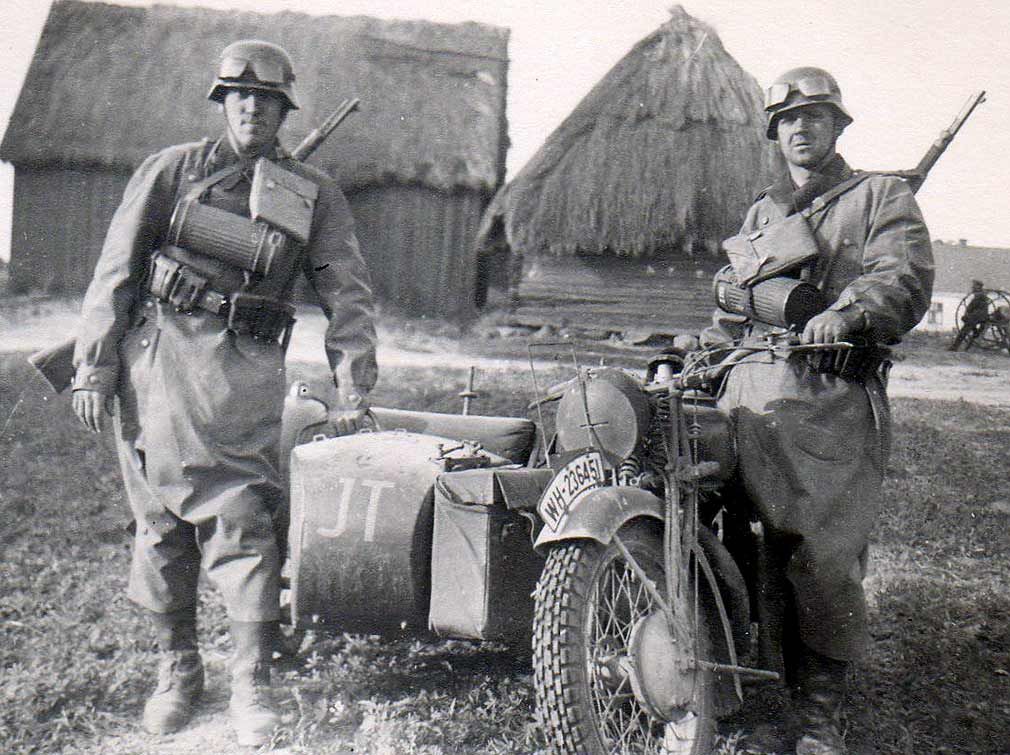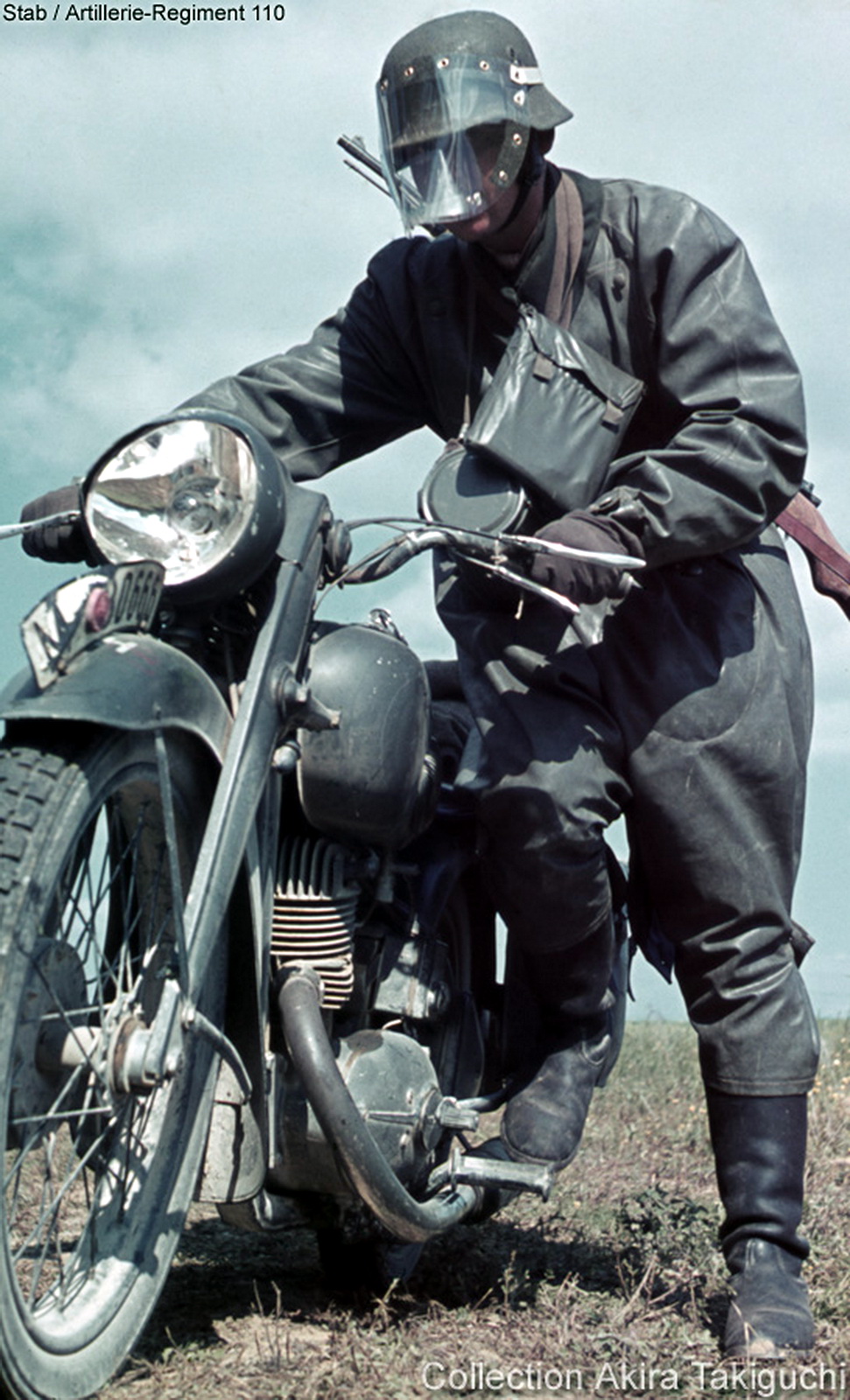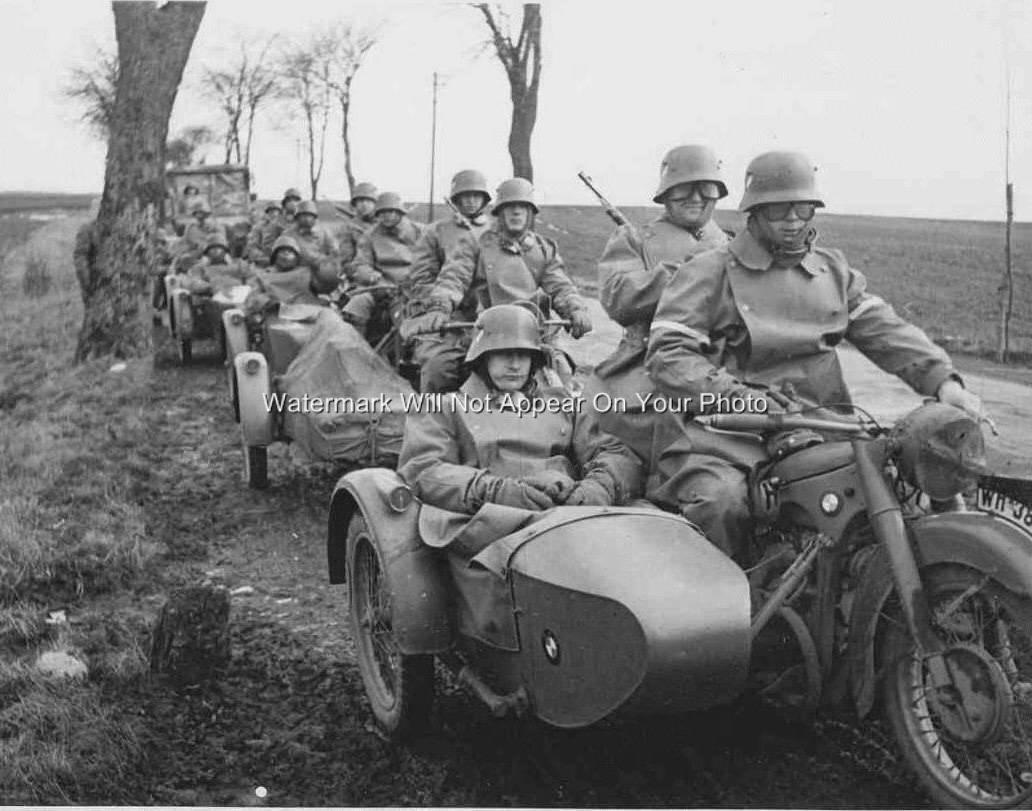WW2 German Army BMW R71 Motorcycle YouTube

Zündapp (a.k.a. Zuendapp) was a major German motorcycle manufacturer founded in 1917 in Nuremberg by Fritz Neumeyer, together with the Friedrich Krupp AG and the machine tool manufacturer Thiel under the name "Zünder- und Apparatebau G.m.b.H." as a producer of detonators (Zünder- und Apparatebau is German for Igniter and Apparatus). In 1919, as the demand for weapons parts declined after.
WW2 German Goggles Motorcycle Panzer Vintage aviator driving Wehrmacht

Male model Weston Boucher shares the dark history behind his 1941 WWII Era BMW R12 Motorcycle, how he acquired it, how long he's had it and more details abou.
WWII Style German Motorcycle Half Helmet with Goggles Chopper Biker

The Zündapp KS 750 is a World War II -era motorcycle and sidecar combination developed for the German Wehrmacht (armed forces) before and during the Second World War, by the German company Zündapp G.m.b.H.
Pin on German Soldier in WWII

The German military was the largest employers of motorcycles during World War II 1939-45. In addition, as German forces swept across conquered lands, they acquired a wide array of British, French and Belgian machines, painted them Wehrmacht gray and sent them into battle.
Pin auf Fashion

With the outbreak of World War II on 1 September 1939, the National Socialist Motor Corps became a target for army recruitment, since NSKK member knowledge of motorized transport was a coveted skill at a time when the bulk of German ground forces relied on horses. The NSKK was used to transport German army troops, supplies and ammunition. [2]
German Motorcycle Helmets

The BMW R75 is powered by a horizontally opposed, air-cooled, twin cylinder engine with a capacity of 745cc, 26 hp at 4,000 rpm, a compression ratio of 5.8:1, two valves per cylinder, and two carburettors. Power was sent back via a shaft to the rear wheel and a second transverse shaft sends power to the sidecar wheel giving full drive to both.
WW2 German Motorcycle Goggles Panzer Vintage aviator driving aged

Type 97 Type 97 motorcycle. (Photo Credit: Imperial Japanese Army / Wikimedia Commons / Public Domain) Produced between 1935-45, the Type 97, or Rikuo, was a WW2-era Japanese motorcycle that was a copy of the Harley-Davidson.
Motocicletas BMW alemana durante la segunda guerra mundial Batalla de

1942 Zundapp KS750. By Margie Siegal. Years produced: 1940-1948. Total production: 18,695. Claimed power: 26hp @ 4,000rpm. Top speed: 60mph (approx.) Engine type: 751cc overhead valve, air-cooled opposed twin (w/cylinders lifted 5 degrees for additional ground clearance) Published on Jul 23, 2009.
GERMAN BIKER IN A ZUNDAPP Ww2 German, German Soldiers Ww2, German Army

Category:World War II military motorcycles of Germany From Wikimedia Commons, the free media repository Subcategories This category has the following 7 subcategories, out of 7 total. B BMW R75 in military service (1 C, 154 F) D DKW NZ350 (19 F) K Kettenkrad (5 C, 1 P, 50 F) Kradschützen (4 C, 10 F) Kradschützen Waffen-SS (4 F) M
World War II in Color German Motorcycle Messenger in the Eastern Front

The BMW R75 is a World War II -era motorcycle and sidecar combination produced by the German company BMW.
Пин на доске WWI

The German military was the largest employer of motorcycles during World War II. In addition, as German forces swept across conquered lands they acquired a wide array of British, French, and Belgian machines, painted them Wehrmacht gray, and sent them into battle.
WWII. A German soldier riding a motorcycle in the snow of the Eastern

The Kettenkrad is powered by the same 1,478cc inline-four cylinder, water-cooled engine used in the Opel Olympia car. Power is sent to the tracks via a three-speed gearbox with both high and low transmission ranges - "Gelande" for off-road and "Strasse" for the street. Despite its relatively high weight and its modest 36 bhp power.
Pin on German soldiers on motorcycles

The Sd.Kfz.2 was designed and built by the NSU Werke AG at Neckarsulm, Germany. Patented in June 1939, it was first used in the invasion of the Soviet Union in 1941. [2] Later in the war Stoewer from Stettin also produced Kettenkrad s under license, accounting for about 10% of the total production. [3]
Pin on sandroraffini photoboard

The BMW R75. The BMW R75 is arguably one of the most iconic motorcycle sidecar outfits from the Second World War. Originally commissioned by the German Army, BMW got to work developing the R75 in 1938, producing their first units in 1940, producing over 16,000 of them before the model was discontinued in 1944.
World War Two Germany Army Troops Soldiers Old BMW R75 Motorcycles

For World War II, the Wehrmacht sent a proposal to both Zundapp and BMW, asking for a motorcycle that could carry 500kg, cruise at 80 kilometers/hour, and have a crawl speed of 5 km/h, among other features. Zundapp built a model from scratch, called the KS750. BMW adapted their R75. The German Army preferred the Zundapp design, but both models.
Pin on WW2 German soldiers and motorcycles

The American Harley-Davidson and Indian; British Triumph, BSA Matchless, and Norton; Italian Moto Guzzi and Gilera; French Terot and Gnome-Rhone; Belgian FN and Gillet were adapted for use by the armies. The German military perfected the use of the motorcycle. They employed the largest number of bikes for their operations.